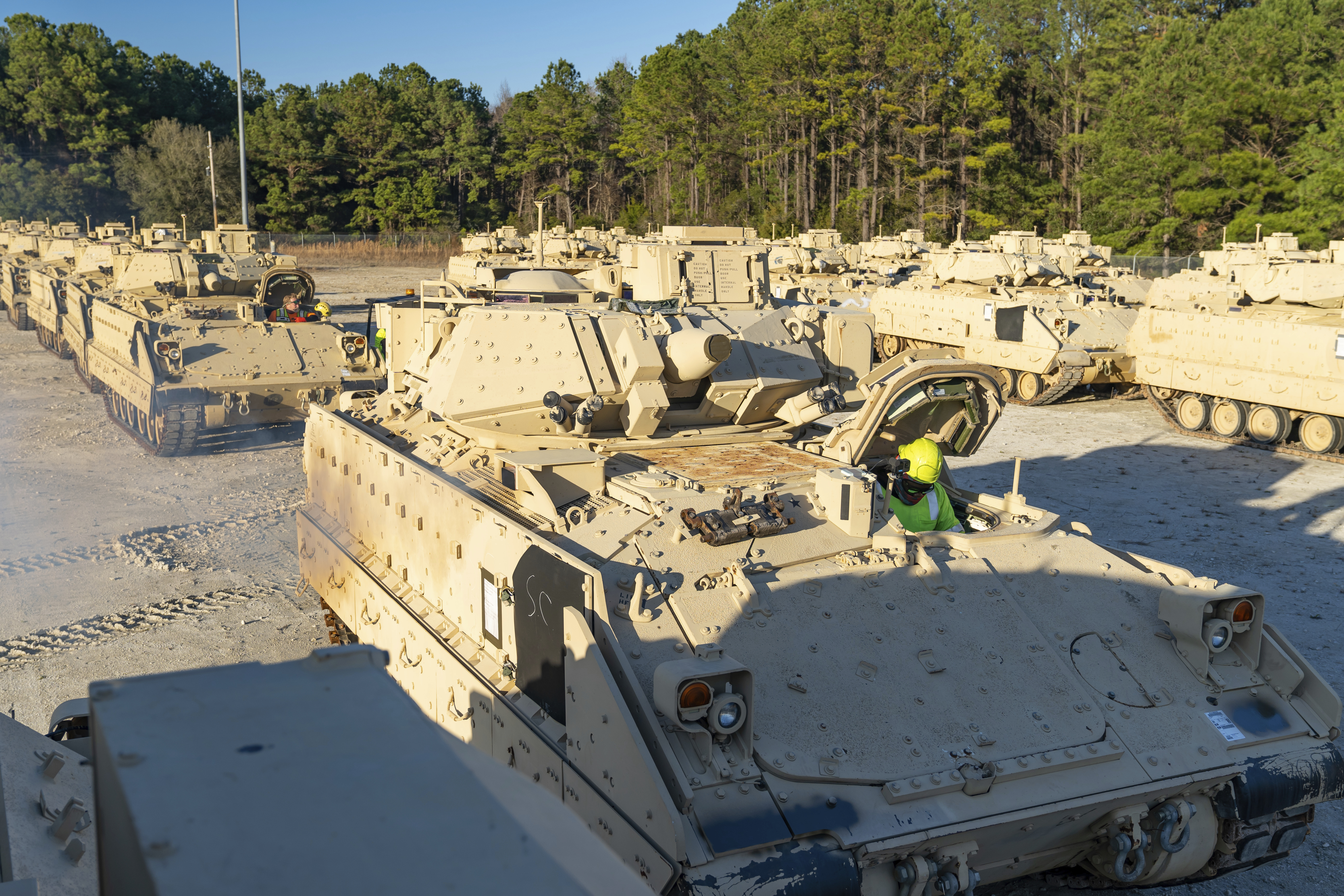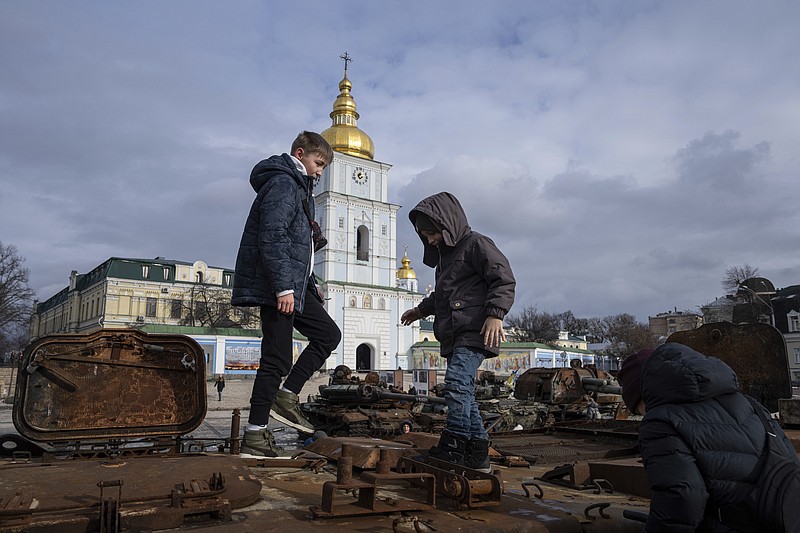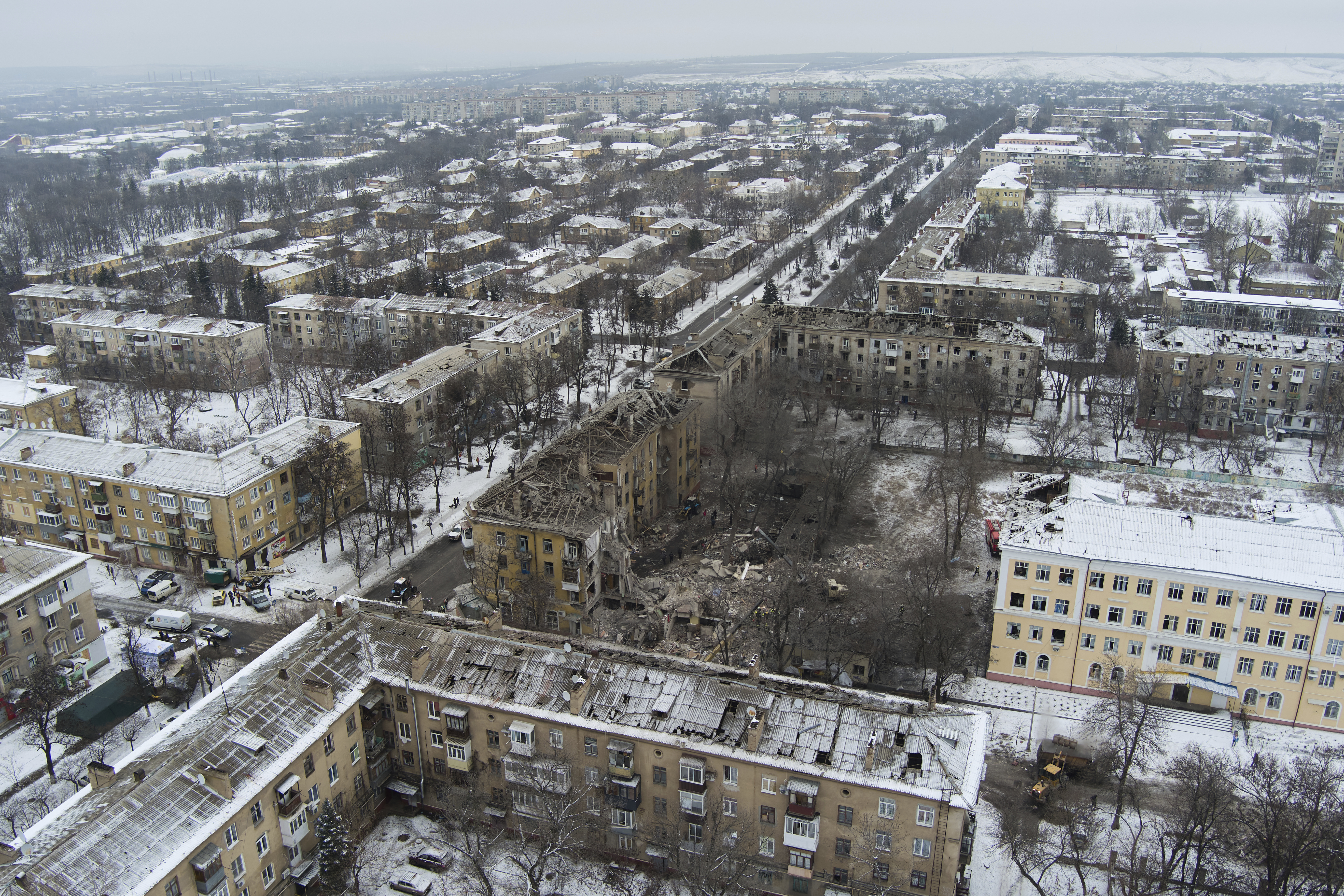WASHINGTON -- The U.S. has agreed to send longer-range bombs to Ukraine as it prepares to launch a spring offensive to retake territory Russia captured last year, U.S. officials said Thursday, confirming that the new weapons will have roughly double the range of any other offensive weapon provided by America.
The U.S. will provide ground-launched small-diameter bombs as part of a $2.17 billion aid package it is expected to announce today, several U.S. officials said. The package also for the first time includes equipment to connect all the different air defense systems Western allies have rushed to the battlefield and integrate them into Ukraine's own air defenses, to help it better defend against Russia's missile attacks.
For months, U.S. officials have hesitated to send longer-range systems to Ukraine out of concern that they would be used to target inside Russia, escalating the conflict and drawing the U.S. deeper into it. The longer-range bombs are the latest advanced system, such as Abrams tanks and the Patriot missile defense system, that the U.S. has eventually agreed to provide Ukraine after initially saying no. U.S. officials, though, have continued to reject Ukraine's requests for fighter jets.
Ukrainian leaders have urgently pressed for longer-range munitions, and on Thursday officials said the U.S. will send an undisclosed number of the ground-launched, small-diameter bombs, which have a range of about 95 miles. The officials spoke on condition of anonymity to discuss details of the aid package not yet made public.
To date, the longest-range missile provided by the U.S. is about 50 miles. The funding in the aid package is for longer-term purchases, so it wasn't clear Thursday how long it will take to get the bomb to the battlefield in Ukraine.
Ukraine's defense minister, Oleksii Reznikov, said Thursday that the country is prepared to offer guarantees to its Western partners that their weapons won't be used to strike inside Russian territory, adding that Kyiv needs weapons with a range of up to about 185 miles to expel the Russian forces.
"If we could strike at a distance of up to [186.4 miles], the Russian army wouldn't be able to mount a defense and will have to withdraw," Reznikov said at a meeting with European Union officials. "Ukraine is ready to provide any guarantees that your weapons will not be involved in attacks on the Russian territory. We have enough targets in the occupied areas of Ukraine, and we're prepared to coordinate on [these] targets with our partners."
The U.S. aid package includes $425 million in ammunition and support equipment that will be pulled from existing Pentagon stockpiles and $1.75 billion in new funding through the Ukraine Security Assistance Initiative, which is used to purchase new weapons from industry.
The assistance initiative, which will pay for the longer-range bombs and the air defense system integration, also funds two HAWK air defense systems, anti-aircraft guns and ammunition, and counter-drone systems.
Since Russia's invasion last February, Western allies have pledged a myriad of air defense systems to Ukraine to bolster its own Soviet-made S-300 surface-to-air missile defense systems, and the latest aid package aims to provide the capability to integrate them all, which could improve Ukraine's ability to protect itself against incoming Russian attacks.
The U.S. has pledged medium- to long-range National Advanced Surface-to-Air Missile Systems, or NASAMS, and truck-launched short-range Avenger air defense systems; the Netherlands, Germany and the U.S. are sending Patriot missile defense systems; Germany is sending medium-range IRIS-T air defense systems; and Spain is sending Aspide anti-aircraft air defense systems.
The addition of longer-range bombs to the latest aid package was first reported by Reuters.
Ukraine is still seeking F-16 fighter jets, which U.S. President Joe Biden has opposed sending since the beginning of the war. Asked Monday if his administration was considering sending F-16 fighter jets to Ukraine, Biden responded, "No."
On Tuesday, the Ukrainian defense minister was asked if Biden's "no" to F-16s was the final word.
"All types of help first passed through the 'no' stage," Reznikov said. "Which only means 'no' at today's given moment. The second stage is, 'Let's talk and study technical possibilities.' The third stage is, 'Let's get your personnel trained.' And the fourth stage is the transfer [of equipment]."
ECONOMIC RECOVERY FUNDS
More than $135 million of a long-dormant U.S. government fund that was established to invest in Russia's private sector will be distributed to help the economies of Ukraine and its neighbor, Moldova, recover from Russia's war, the U.S. Agency for International Development announced on Wednesday.
Another $18 million of the money from the fund, known as the U.S. Russia Investment Fund, will support Russian pro-democracy groups, including independent media, human-rights monitors and civil society groups that may have been exiled, USAID said.
The money in the U.S. Russia Investment Fund has been effectively frozen for 15 years, across the Obama and Trump administrations, over questions about who should get it. The fund's goal, when it was established in 1995, was to support a free-market economy in Russia, though the Kremlin has since "thwarted those dreams," said Samantha Power, the administrator of USAID.
Efforts to distribute more than $150 million remaining in the fund were accelerated after President Vladimir Putin's invasion of Ukraine last year, Power told the Senate Foreign Relations Committee in May.
On Wednesday, speaking at an event announcing the distribution of the aid with Ambassadors Oksana Markarova of Ukraine and Viorel Ursu of Moldova, Power hailed the redirection of the money "to those resisting Moscow's aggression." She also praised the entrepreneurship of citizens in Ukraine and Moldova, which welcomed more Ukrainian refugees than any other country at the start of the war.
"This funding can be catalytic in helping incentivize Ukrainian refugees -- those families who have gone to Europe and beyond -- to return," Power said. "We know they never wanted to leave in the first place."
NORWAY STEPS UP AID
Prime Minister Jonas Gahr Store of Norway said Thursday that the oil-rich Scandinavian country will become one of the world's top donors to Ukraine when his two-party center-left government presents another planned military and civilian aid package.
Norway's profits from oil will finance the additional aid, and there will be a temporary increase in the use of oil money, Gahr Store told the Norwegian parliament. He did not reveal how large the contribution will be, but he said the government would make it soon.
"We are in a situation where we have room for action due to extraordinary income from the petroleum sector," said the prime minister, who leads Norway's Labor Party.
He said the aid would be arranged in a way that has very little impact on the level of activity in the Norwegian economy.
Norway is one of Europe's largest fossil-fuel exporters, and the conflict in Ukraine has boosted its gas revenue. However, Norway has fended off accusations that it's profiting from the war in Ukraine. Last year, the country gave Ukraine $1 billion in civilian and military aid.
"We are now stepping up this aid. We will contribute even more to the repair and reconstruction of damaged infrastructure," Gahr Støre said.
After Russian President Vladimir Putin sent troops to invade Ukraine on Feb. 24, 2022, a frantic search by European countries for alternatives to Russian energy dramatically increased the demand -- and price -- for Norway's oil and gas.
Gahr Store stressed the increased aid to Ukraine "should not, I repeat should not, be about bringing more oil money into the Norwegian economy."
"The war will very likely last for a long time, and there is a risk that the human suffering will get even worse," he said, noting several times that Russia's war in Ukraine is about to enter its second year.
Lawmakers from the 10 parties in the 169-seat Stortinget plan to meet Monday to discuss aid to Ukraine. Rigmor Aasrud of Gahr Store's Labor Party said she hoped a large majority would back the government's plan. Norway's governing coalition also includes the Center Party.
Information for this article was contributed by Tara Copp, Matthew Lee, Lolita C. Baldor, Dasha Litvinova and staff writers of The Associated Press and by Anushka Patil of The New York Times.
 In this image provided by U.S. Transportation Command, a stevedore sits in a Bradley Fighting Vehicle before loading it onto the ARC Wallenius Wilhemsen Jan. 25, 2023, at the Transportation Core Dock in North Charleston, S.C. After months of agonizing, the U.S has agreed to send longer-range bombs to Ukraine as it prepares to launch a spring offensive to retake territory Russia captured last year, U.S. officials said Thursday, confirming that the new weapons will have roughly double the range of any other offensive weapon provided by America. (Oz Suguitan/U.S. Transportation Command via AP
In this image provided by U.S. Transportation Command, a stevedore sits in a Bradley Fighting Vehicle before loading it onto the ARC Wallenius Wilhemsen Jan. 25, 2023, at the Transportation Core Dock in North Charleston, S.C. After months of agonizing, the U.S has agreed to send longer-range bombs to Ukraine as it prepares to launch a spring offensive to retake territory Russia captured last year, U.S. officials said Thursday, confirming that the new weapons will have roughly double the range of any other offensive weapon provided by America. (Oz Suguitan/U.S. Transportation Command via AP
